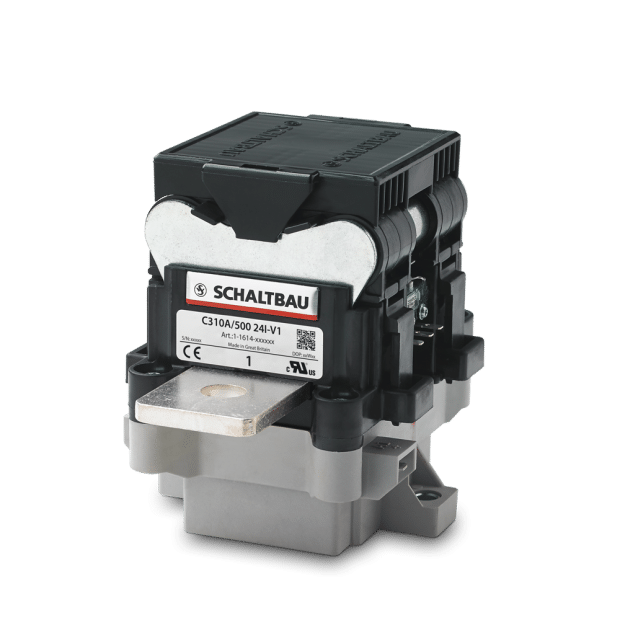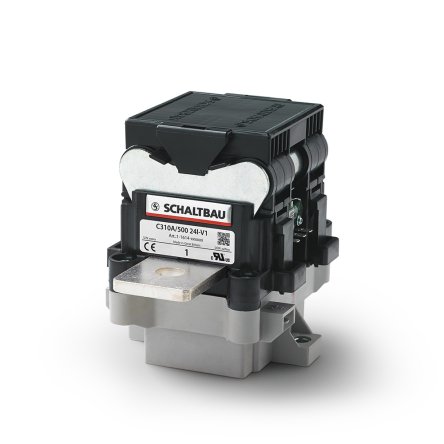High-voltage contactors for demanding battery test systems
C310 DC contactors switch charging and discharging currents of up to 480 A
Picture: S.E.A. Datentechnik
Alternative power units represent a key component in the automotive future. They require the development of new high capacity energy storage systems. Here, high-power lithium-ion batteries now dominate. These must be designed to be extremely efficient in terms of discharging and charging capacity, in order to be able to provide the electrical energy for the drive and to ensure short charging times. To meet the requirements in the automotive sector, and to ensure the required safety is provided during running, battery management systems are becoming more and more complex.
The company S.E.A. Datentechnik, Troisdorf, Germany has developed battery testing systems to meet these special requirements: these can be individually configured, scaled up or down, and can be flexibly adjusted to match the respective test requirement. And, when switching discharging and charging currents, S.E.A. relies on the high-voltage contactors of Schaltbau.
P480-1000 high performance battery testing system (S.E.A. Datentechnik)
The essential components of a battery test system are the power supply units and consumers. When charging the battery system, they provide the appropriate power and act as a consumer for the battery to simulate complex discharging processes. Firstly, these components are decisive for the technical properties; secondly, they are a key cost factor for battery test systems.
These components are more efficient and thus can be used more economically in the new P480-1000 high-voltage battery test system: In this system, the power electronics are housed in a central power unit. They can provide the necessary power (maximum 480 A and 1,000 V) for up to four mobile test stations.
24 Schaltbau C310A/500 high-voltage contactors are combined in a specially developed high performance switching matrix so that, dependent on the required power, high performance power supply units can be switched in across the contactors and, in this way, the battery systems tested with different powers. The contactors must be capable of safely and reliably switching currents of up to 480 A both during battery charging and discharging. Moreover, for the battery insulation test, the current paths must be safely disconnected with a dielectric withstand voltage of up to 6 kV. This led to the selection of the Schaltbau bidirectional C310 DC contactors.
Mr Axel Meinen of the technical sales department at S.E.A. stated, “Thanks to their high performance and small size, the Schaltbau C310 contactors played a key role in the development of our new generation of battery test systems.”
The high-voltage contactor can conduct up to 500 A continuously. In the event of a short circuit, it can conduct a current of 3,000 A for up to one second without the contacts fusing – enough time for the short circuit protection to trip. This ensures that not only are the test samples protected, but also the operating personnel and the test system.
Further reasons for using the C310/500 contactors:
- Both current directions are safely handled. Therefore, the contactors are ideal for all applications involving energy recovery.
- Currents up to 480 A at operating voltages up to 1,000 V, which are switched using the system
- Dielectric withstand voltage up to 6 kV during insulation testing
- Compact design








